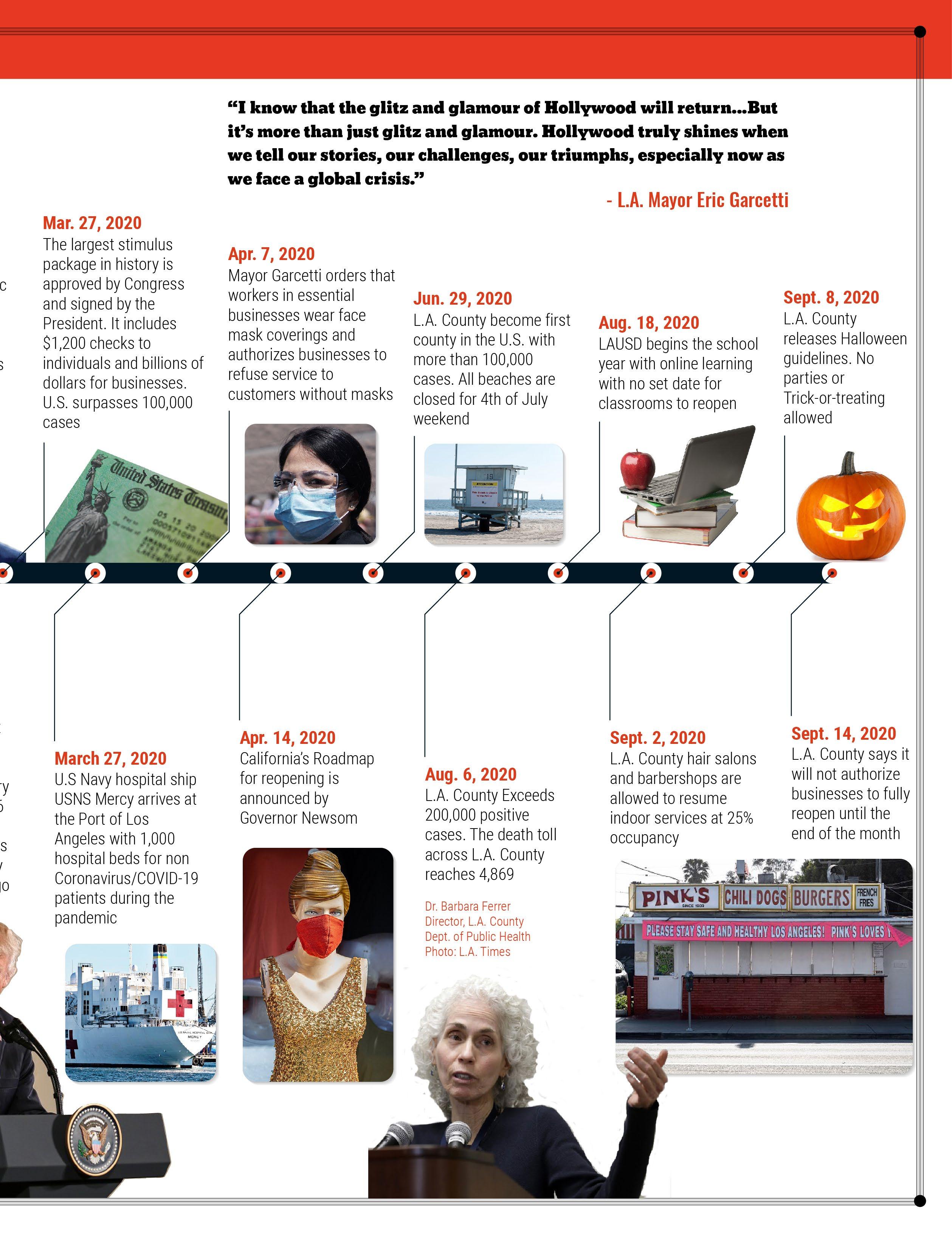
4 minute read
COVID-19 COVERAGE


Advertisement
With conscious awareness of ourselves, we can learn to balance our responses to help us adjust and thrive, even in crisis situations.
1. Get Your Socialization On!
One way we can balance in times of crisis as humans is socialization--the interactions between pairs, families, and communities. Our social brain, a part of the nervous system called the ventral vagal complex, is activated to further build resilience, when we observe safety cues such as hearing a soothing voice, seeing a smiling face, and noticing calm or caring gestures. When activated, the social brain can enable us to be better able to listen to the words of others and connect on an emotional level. When in quarantine, this socialization strategy can be difficult, but we have the benefit of social media, video chat, and telephones/tablets, and computers. When feeling unbalanced, remember that we have a social brain that assists us to calm.
2. Let Go of Expectations
Expecting others and things to go a certain way can be the cause of our discomfort. When we expect an outcome regarding something outside of us, invariably we are disappointed when we turn out to not be as psychically inclined as we’d thought. Most of what disrupts our routines is the difference in the today vs. what we remember from before. We can practice present focus and explore letting go of thoughts about what should be happening or might be coming. In this present moment, it is ok to just be. It is ok to expect that today will be a good day and that tomorrow will arrive. We have a choice in the expectations we give our attention to. Let’s let go of the thoughts about what we should be doing and land where we are - a time for focusing on gratitude for what still is.
3. Remember, Kids Feel It Too
I invite you to notice that the children in our lives can have a difficult time in transitions because they have had less time to develop coping strategies than adults. In this situation, they are now being asked to learn in new ways, lose their primary source of socialization - the school environment, and now see their parents as a part of a rigid curriculum. Irritability, shutting down, running away, increased isolation, statements that indicate worry about death or safety, nightmares/ lack of sleepy are some common issues that might come up for children and indicate they might be having some symptoms of anxiety/depression, etc. That being said, it does not mean they should be diagnosed with a Mental Health Disorder. We can model some healthy techniques such a deep belly breathing that we now know activates the vagus nerve, to decrease the feelings and their impact. The children will recover. They will catch up if they are unable to focus right now. Breathe through. And try again after the pause.
Five tips for L.A. moms to manage expectations while being ‘Safer at Home’
Although there is much mental stimulation available to us via all forms of media, many of us, with the quarantine limiting our ability to follow our previous routine; have stopped having a routine of sleep. Losing time, having tv show marathons or late night video game challenges can lead to falling asleep in disjointed intervals. It would benefit us to have a bedtime goal and practice a dietary and electronics schedule around sleep. For example, a regular bedtime goal of 10pm means we would stop electronics around 9pm and try not to eat too late after 7pm so that our food digesting doesn’t keep us up and gives us disrupted sleep patterns and irritability the next day. Restful sleep has all sorts of mood benefits and can improve some of the communication and family dynamic issues that can come up while quarantining.
5. Practice Grounding Strategies When Feeling Unbalanced
When our thoughts take us over and it starts to impact our ability to self-regulate, we can establish a routine for when panic or feelings of overwhelm arrive. Most panic attacks last 15-20 minutes and then they’re over. Remember, the mind is in control and the body helps communicate to the mind by causing havoc until we listen. Practice the following grounding strategy when needed:
(1) Go outside or go near a window and feel the sunshine, if no sunshine, just grab some fresh air (2) Close your eyes or choose a focal point that can hold your attention, preferably your lap or toes so that your eyelids can rest (3) Focus on your breathing, in and out (4) Once you are a bit calmer, look around the room you are in and notice five things (5) Continuing to breathe in and out, notice 4 things you can hear (6) Breathe in and out and notice 3 things you can feel (7) Taking your biggest breath yet, notice 2 things you can smell, and finally (8) Notice 1 thing you can taste— be it a memory of a taste or after taking a real bite. Breathe. We’ve got this.








